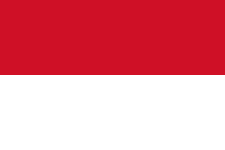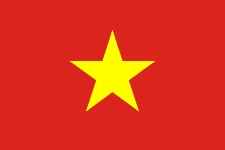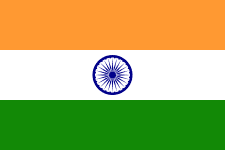- Industry
- Region
- Country / Region
On January 16, 2025, the Brazilian National Telecommunications Agency (ANATEL) issued Resolution No. 772 of 2025 approving a new plan for the allocation and allocation of frequency bands in Brazil. The effective date of the resolution is February 3, 2025.
This new resolution changes Annex I of Resolution 680, which is Brazil's main standard for restricting radiated emissions from wireless devices in certain frequency bands. Other parts of resolution 680 remain in force. The resolution also replaces a number of previous regulations, such as Resolution 759 of 2023 and Resolution 766 of 2023.
Click on this link to view the original text of ANATEL Resolution 772 of 2025.
On 15 January 2025, Thailand's National Broadcasting and Telecommunications Commission (NBTC) launched a public consultation on the following draft announcement:
- (Draft) NBTC Announcement on Technical Standards for Wireless Microphones, Radio Communication Equipment, Telecommunications Equipment and Equipment
- (Draft) NBTC Announcement on Permitted Standards for the Use of Frequencies and Radiocommunication Equipment for General Use
- (Draft) NBTC Announcement on Technical Standards for Telecommunications Equipment and Equipment Using Digital Enhanced Cordless Telecommunications (DECT) Technology
Click on the this link to view the original public consultation, the comment period is until 17 March 2025.
On October 21, 2024, Indonesian President Prabowo Subianto appointed Meutya Viada Hafid as Minister of Communications and Digital Affairs of Indonesia, officially announcing the change from the Ministry of Communications and Information Technology (KOMINFO) to the Ministry of Communications and Digital Affairs (KOMDIGI). The original Directorate General of Postal and Information Resources and Equipment (Direktorat Jenderal Sumber Daya dan Perangkat Pos dan Informatika, SDPPI) was also officially renamed the Directorate General of Digital Infrastructure (Direktorat Jenderal Infrastruktur Digital, DJID) on January 13, 2025. Subsequent DJID-issued new certificates will include a new logo and a new certificate number format.
Act S.2114, the Foreign Adversary Communications Transparency Act, was introduced to the U.S. Congress on June 22, 2023. The bill directs the Federal Communications Commission (FCC) to publish a list of entities in which the adversary country has some ownership and holds authorizations, licenses, or other authorizations issued by the FCC. Since the term of the 118th National Assembly expires on January 3, 2025, the bill was automatically terminated because it was not passed during the term of office and did not become law.
Click on this link to see the details of the bill.
On January 2, 2025, Saudi Arabia's Communications, Space and Technology Commission (CST) and the Saudi Standards, Metrology and Quality Organization (SASO) jointly announced the first phase of mandatory unified charging ports for electronic devices in Saudi Arabia from January 1, 2025. However, at the same time, SASO also sent a letter to the relevant authorities in December, clarifying the following mandatory requirements:
- Submission of SASO IEC 62368-1:2020 Information and Communication Technology Equipment, Audio/Video - Part 1: Safety Requirements Test Report;
- Submit a self-declaration of conformity to SASO, which should be included in the product technical documentation, committing that the uniform charging port meets the performance requirements specified in SASO IEC 62680-1-2:2023 and SASO IEC 62680-1-3:2023;
- A one-year grace period will be provided for the above requirements as of January 1, 2025.
Click this link to view the announcement on the CST website about the first phase of enforcement.
On January 2, 2025, the Directorate General for Digital Infrastructure (SDPPI) of Indonesia issued a notice on its official website announcing the expiration of Decree No. 109 of 2024 on the authorization of foreign testing laboratories for the certification of telecommunications equipment in Indonesia (the expiration date of the regulation is December 31, 2024). In the notice, SDPPI made the following requests:
- Reports issued by foreign laboratories from January 1, 2025 cannot be used for certification until the foreign laboratory is re-accredited in accordance with the latest regulations;
- Reports issued before January 1, 2025 will still be available for certification for the next 6 months.
Since October 30, 2024, when SDPPI closed the new round of laboratory qualification applications, SDPPI has not issued new regulations for the authorization of foreign testing laboratories for this application yet. Based on the communication with SDPPI by the platform, the relevant regulations are still in the process of being signed within the Indonesian Ministry of Communications and Digital Affairs; In addition, when the new regulations on laboratory authorization are issued, SDPPI will recognize the reports issued by laboratories authorized by the new regulations from January 1, 2025 to the date of publication of the regulations.
Click this link to view the original SDPPI announcement.
On January 1, 2025, the Ministry of Communications and Media (MIC) of Vietnam issued the regulation No.19/2024/TT-BTTTT and technical standard QCVN 134:2024/BTTTT the specific absorption rate of handheld and portable radio equipment. The specific requirements for the implementation of regulations and standards are as follows:
- This regulation will come into force on February 15, 2025, and the relevant testing, certification and declaration of conformity shall be in accordance with the QCVN 134:2024/BTTTT standard;
- For mobile phones, the mandatory date is July 1, 2026;
- For other products to which QCVN 134:2024/BTTTT applies, the mandatory date is July 1, 2027.
Click on this link to view the original regulations and standards.
On January 1, 2025, the Ministry of Communications and Media (MIC) of Vietnam issued the regulation No.20/2024/TT-BTTTT and technical standard QCVN 133:2024/2024/BTTTT NR and E-UTRA multi-standard mobile communication base station equipment. The specific requirements for the implementation of regulations and standards are as follows:
- This regulation will come into force on February 15, 2025, and the relevant testing, certification and declaration of conformity shall be in accordance with the QCVN 133:2024/BTTTT standard;
- Starting July 1, 2025, NR and E-UTRA multi-standard mobile base stations must comply with the QCVN 133:2024/BTTTT standard.
Click on the link to view the original regulations and standards.
India: TEC has issued a notice of acceptance of ILAC-accredited laboratory reports for some products
On January 1, 2025, the Telecommunication Engineering Centre (TEC) of India issued a notice to accept RF test reports issued by ILAC accredited laboratories from non-border sharing countries for some product technical parameters under the MTCTE framework, which is valid until June 30, 2025. Only test reports within two years of the date of issue will be accepted.
Related products include:
- MTCTE Phase III: Base station up to 4G;
- MTCTE Phase IV: SIM & VHF UHF Wireless System;
- MTCTE Phase V: 5G Bbase sation and E-Band Fixed Wireless Relay System (Note: E-band is the 71-86GHz band).
Click this link to view the original notice issued by TEC.
Following a public consultation on August 23, 2024, on December 31, 2024, the Ministry of Information and Media (MIC) of Vietnam issued a circular numbered 21/2024/TT-BTTTT promulgating the National Technical Regulations on Basic Information Security Requirements for Surveillance Cameras Using Internet Protocols, QCVN 135:2024/BTTTT.
The conformity assessment must be carried out in accordance with Method 1 (Sampling Inspection), Method 5 (Type Testing Combined with Production Process Supervision) and Method 7 (Sampling Inspection and Evaluation of Batch Products) as set out in Circular Letter No. 28/2012/TT-BKHCN and its amendments. The circular will take effect on 15 February 2025. As of January 1, 2026, imported and domestically produced Internet Protocol surveillance camera equipment must comply with the provisions of QCVN 135:2024/BTTTT.
Click on the view the original Circular.





